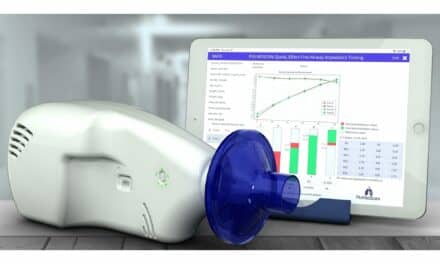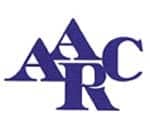Despite innovation and advancements in modern ventilator management, it’s still essential for clinicians to know that the information they provide is accurate.
To help manufacturers meet the ventilator demand from COVID-19, Hans Rudolph Inc has developed a Ventilator Testing Kit that incorporates the company’s SmartLab Data Acquisition System and other Hans Rudolph respiratory testing components.
The testing kit includes all the necessary components to effectively test ventilators utilizing its SmartLab Flow, Pressure, Lung Compliance, and Resistance Modules and Insight Software. This kit also includes our Rudolph Pneumotach Flow Sensor, Heater Control, and Calibration Syringe.
The SmartLab Systems capabilities extend to a wide range of respiratory applications such as O2, CO2, airway temperature, ECG, and will allow for the testing of two ventilators simultaneously, utilizing flow and pressure measurements.
“At Hans Rudolph Inc, we are committed to helping our partners in the respiratory healthcare field fight against the COVID-19 pandemic,” said Kelly Rudolph, president, Hans Rudolph Inc. “Our SmartLab system was designed specifically for respiratory research, allowing manufacturers to obtain accurate and precise data. Combining our Rudolph Pneumotach Flow Sensor, SmartLab Flow Module, and Calibration Syringe, we accomplish a flow signal accuracy of +/- 2.0%.”
To learn more about the device, and medical equipment testing in general, RT spoke with Aaron Dirks, Hans Rudolph’s senior design engineer for the SmartLab.
RT: Patient safety begins with safe, effective medical devices. How important are routine “check-ups” on these devices using testing & calibration equipment?

Aaron Dirks is the senior design engineer for Hans Rudolph Inc’s SmartLab, which is used in the HRI Ventilator Testing Kit.
HRI: Many modern ventilators have nice displays and many different operating modes that can be selected so the user has a lot of control over the ventilation settings that are provided but it is important to know that the information provided is accurate. It is possible to rely too much on the settings and nice graphics and miss some detail that may throw off the measurements. A regular check to make sure that a system is performing as expected can provide confidence that the ventilation function is working as expected. It is also important to test with the actual circuit being used to remove any error that may be due to a different circuit than the one that the system was originally designed to work with.
RT: If you were responsible for creating a testing/calibration schedule for an RT department, what would that look like and how often would you recommend testing ventilators specifically?
HRI: I don’t have the experience needed to provide a recommendation. I would ask the manufacturer of the equipment and also the hospital biomedical department. The manufacturer would know best what is likely to fail or go out of calibration or adjustment and the biomedical department would have knowledge of the service that is done on the equipment.
RT: What allows the SmartLab to test two ventilators simultaneously and what are some of the most important things healthcare workers should do/consider when testing two ventilators?
HRI: Assuming that you are primarily looking at pressure and flow as the two main signals that need to be monitored to verify the function of a ventilator, the SmartLab can be configured with two flow channels and two pressure channels so that one set can be used on each ventilator. The graphs and data that are displayed can be configured so that each set of measurements can be grouped together. All the ventilation parameters that are calculated from the flow signal are shown in one group so it is easy to see what the measured values are for a particular ventilator. The pressure measurement for each ventilator can be tied to a flow signal so that the pressure parameters such as peak airway pressure or mean airway pressure are calculated for the flow signal that it is attached to. The arrangement of graphs and measured parameters can be done so that it is possible to keep track of two systems being tested. If you were to use a second monitor the measurement windows and graphs for each ventilator could be placed on separate monitors. The only thing that would need to be shared between two systems would be the oxygen sensor if you want to use that to check the oxygen concentration being delivered. The sample line would need to be moved from one system to the other one.
RT: Beyond ventilator testing, what other hospital equipment can Healthcare Workers use the SmartLab for?
HRI: The SmartLab system is very useful as a research instrument to measure a variety of respiratory parameters on test subjects ranging in size from small animals to exercising adults and medium size animals.
There are several different sensors that can be used with the system to measure things such as oxygen concentration, CO2 concentration, pulse oximetry, voltage signals, respiratory bands, and a wide range of pressure and flow options. These options make the system capable of being configured to be used in a wide variety of research applications.
Many other devices could also be checked depending on the sensors that are installed. CPAP and bilevel systems could be checked for proper pressure output. Oxygen delivery equipment such as flow meters, conserver systems and concentrators can be checked for proper calibration and operation. There are also some very useful data recording features for saving test data that can be useful for saving a record of a test or for further analysis of the data. A playback file can be used to record a test and later the file can be loaded to setup the system as it was when the file was recorded and then play back the data just like it was when the test was originally performed.
RT: In a typical healthcare system, Who is traditionally responsible for the testing and calibration of hospital equipment like mechanical ventilators? Can any healthcare worker operate the testing equipment? And if not, what steps could a HCW who is interested in that role take to become a qualified operator?
HRI: Most hospitals will have a biomedical department that is responsible for maintaining the equipment. This would be the most likely group that would use the SmartLab to check the function of a device. The system is easy enough to operate that an RT or other HCW could use the system to perform some functional checks of a device.
A simple procedure would need to be developed to define the setup and connections to make and how to perform some basic checks. Setups can be stored in the software so that it is easy to configure the measurements and graphs for a particular test. This makes it possible to setup for different types of tests without going through and configuring everything each time a test is changed. We have several customers that are not very familiar with respiratory measuring equipment who are using this device for a variety of research and clinical studies. The ability to recall a setup makes it easy to repeat a test with minimal training.
RT
For more information, contact [email protected].










